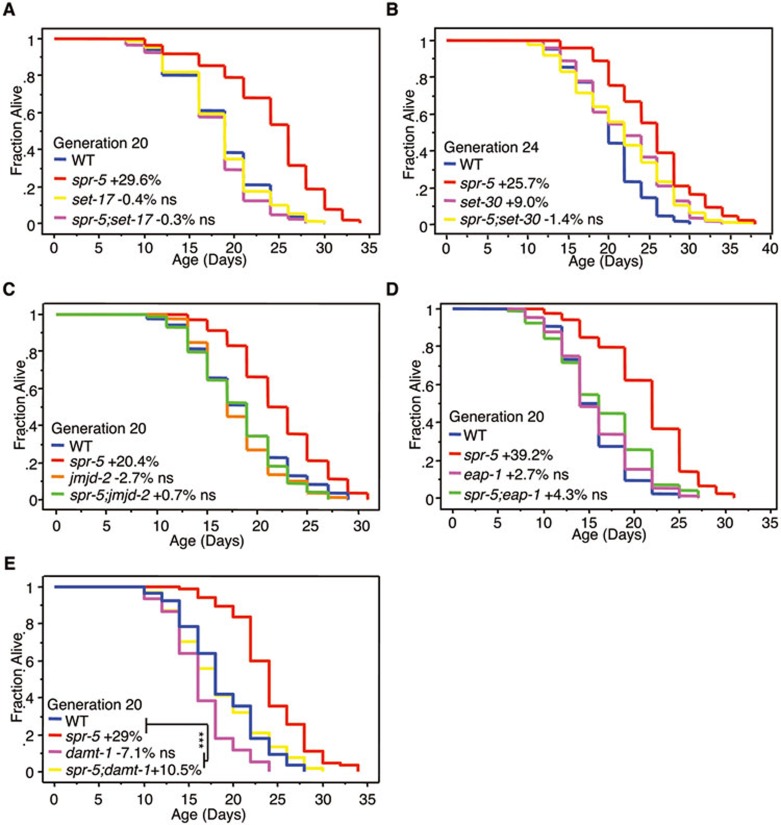Figure 2.
spr-5 transgenerational longevity is dependent on chromatin regulators which control progressive fertility defect and H3K4me2 and 6mA levels. (A) spr-5(by101) mutant worms live longer than wild-type worms at generation 20 but spr-5;set-17 double mutant worms do not live longer than set-17(n5017) mutant worms (two-way ANOVA P < 0.0001). (B) spr-5(by101) mutation increases the lifespan of wild-type worms but does not increase the lifespan of set-30(gk315) mutant worms after 24 generations (2 way ANOVA, P < 0.0001). (C) spr-5(by101) mutant worms live longer than wild-type worms at generation 20 but spr-5;jmjd-2 double mutant worms do not live longer than jmjd-2(tm2966) mutant worms (two-way ANOVA P = 0.0002). (D) spr-5(by101) mutant worms live longer than wild-type worms at generation 20 but spr-5;eap-1 double mutant worms do not live longer than eap-1(ok3432) mutant worms (2 way ANOVA P < 0.0001). (E) spr-5(by134) mutant worms live longer than wild-type worms at generation 20 and this is partially dependent on damt-1 (two-way ANOVA P = 0.0004). Statistics are presented in Supplementary information, Tables S3 and S4.

